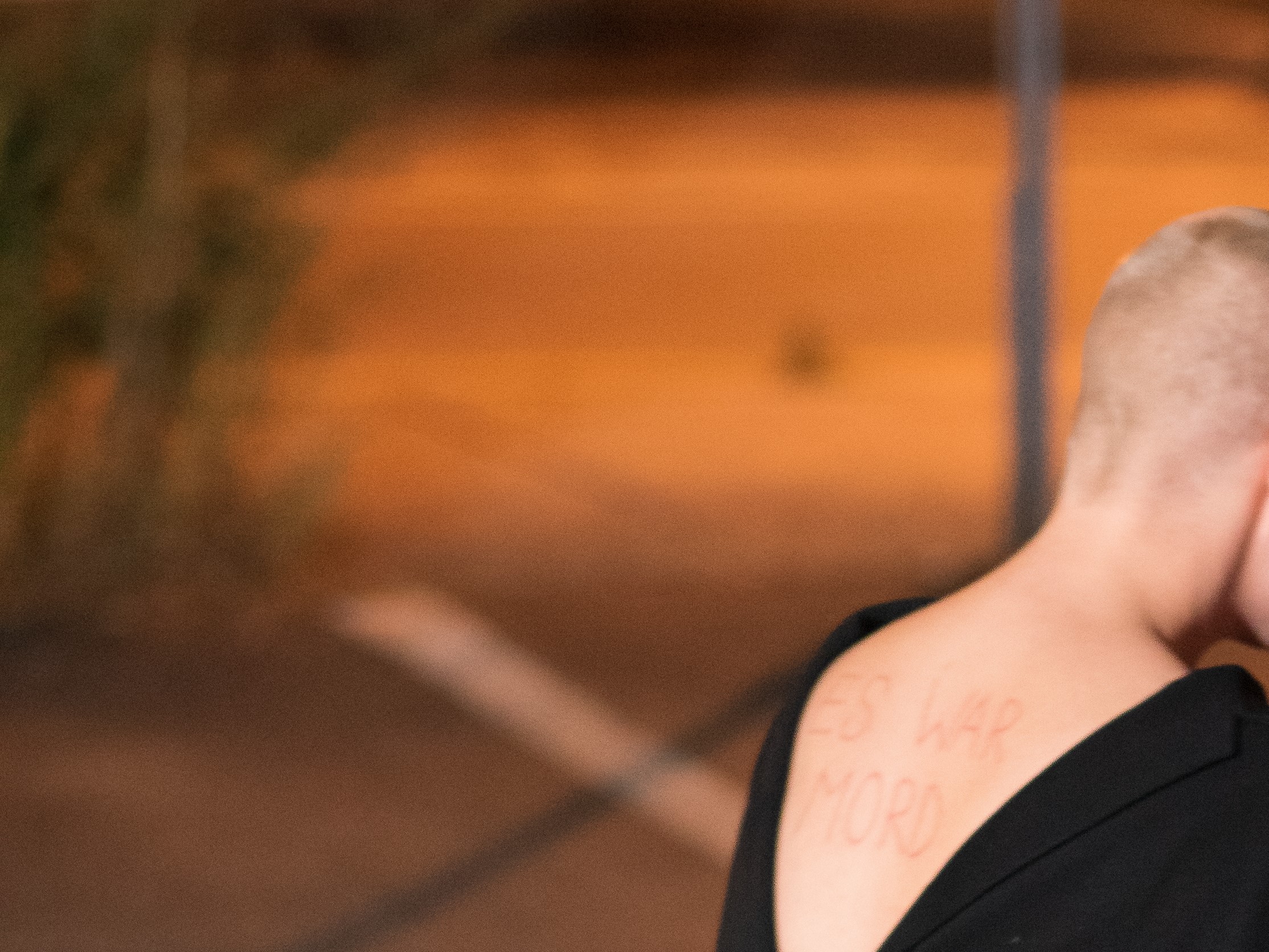
avec ma main brûlée j’écris sur la nature du feu (2021)
Pour la “RLAP”, Le Lieu, Québec. 20 min.
Un matin, un ami est dans ma cuisine et je me lance dans une fabulation – celle de considérer comment le fait de se négocier le meurtre est une condition centrale d’existence des personnes vivant les violences du patriarcat. Se faire tuer, tuer, supplier de ne pas être tué-e et se tuer – telle est notre condition, ou du moins c’est ce que je lui raconte, en avançant des preuves fictives et alambiquées :
1. Brigitte Fontaine chante en 1977 : Je vous déclare la paix, foutez-nous la paix […] Tu n’es pas
venu pour me tuer, alors ne me tue pas.
2. Quatre ans plus tôt, Ingeborg Bachmann termine son seul roman avec la phrase Es war Mord --
c’était un meurtre. La femme sans nom qui est le personnage central de son roman vient de
disparaître dans la craque d’un mur.
3. Quarante ans après la mort ambigüe de l’auteure, un article s’obstine à considérer comme un
suicide la disparition de la femme sans nom, en élaborant des parallèles avec la mort d’Ingeborg.
4. Quarante ans plus tard aussi, Brigitte Fontaine a 81 ans lorsqu’elle en vient à un appel aux armes :
Masculin assassin […] / Ni pardon, ni manif' / Assez parlementé / Vive la lutte armée [...] / À mort, à
mort, à mort ».
C’est en me plaçant en filiation d’elles que j’élabore ce matin-là une théorie, comme manière d’hériter autrement du meurtre, comme une manière d’en faire quelque chose de vivable, comme une manière de ni être puissant-e ni impuissant-e. Cette performance en est une réitération.
*
For “RLAP” Le Lieu, Québec City. 20min.
One morning, a friend is in my kitchen and I launch into a fabulation - that of considering how negotiating murder is a central condition of existence for people living with/surviving the violence of patriarchy. To be killed, to kill, to beg not to be killed and/or to kill ourselves -- this is our condition, or at least that’s what I tell him, using fictitious and convoluted evidence:
1. Brigitte Fontaine sang in 1977: Je vous déclare la paix, foutez-nous la paix [...] Tu n’es pas venu
pour me tuer, alors de ne tue pas -- I declare peace, leave us alone [...] You didn't come to kill me,
so don't kill me.
2. Four years earlier, Ingeborg Bachmann had ended her only novel with the sentence
Es war Mord -- It was murder. The nameless woman who is the central character of her novel has just
disappeared in the crack of a of a wall.
3. Forty years after the author's ambiguous death an article persists in considering the disappearance
of the nameless woman as a suicide, drawing parallels with the death of Ingeborg.
4. Forty years later, Brigitte Fontaine is 81 years old when she comes to a call to arms: "Masculin assassin [...]
/ Ni pardon ni manif / Assez parlementé / Vive la lutte armée / À mort à mort à mort" -- masculine, murderer
/ no forgivness, no demonstration / enough talking / long live the armed fight / death to them, death to them,
death to them.
It is by placing myself in filiation with them that I elaborate that morning a theory, as a way of inheriting murder in a different way, as a way of making something livable out of it, as a way of being neither powerful nor powerless. This performance is its reiteration.
- - -
* the title of this performance is an unreferenced quotation from Ingeborg Bachmann who writes with my burnt hand I write about the nature of fire in her novel Malina, quoting without clear reference to Flaubert who writes with my burnt hand I have the right now to write sentences about the nature of fire in a letter dating from 1852. In both cases, it seems to me that this sentence is about the epistolary as a self-reflexive and fabulatory mode, about the role of the sick person and their way of engaging in relationality, about the encorporation of pain in the flesh and about immunization.